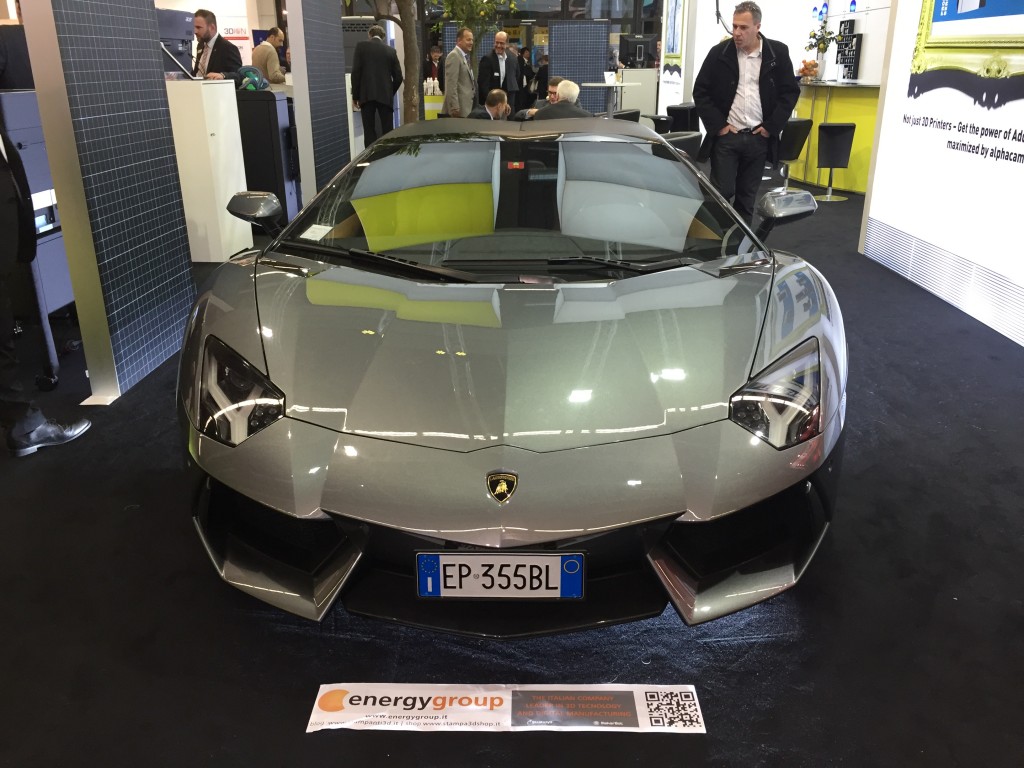We know that top car – and even “bottom” car – manufacturers have been making intensive use of 3D printing to deliver prototypes and final models faster to the market. How intensive they use it is still not entirely clear, as most companies release this information only when they have already moved on to the next phase of 3D printing implementation. So, when a car manufacturer in the top 1 percentile, like Lamborghini, decides to give some insights as to what they use 3D printing for, it is usually something that can be of interest to all of those involved in the AM industry.
As it turns out, Lamborghini uses 3D printing to make their cars faster: not so much to get them to go faster (even though that may be a byproduct of faster development) as much as they actually make – as in manufacture – their cars in shorter times, and with lower costs. This is one of the reasons why Lamborghini – a company that used to make only one new model every few years – has been releasing many different models and upgrades and will soon expand its range into SUVs – with the Urus (the most affordable Lambo ever) – and Hybrids, with the incredible Asterion.
Together with the new capital infused through its acquisition by Audi, all of this was made possible by the increased use of 3D printing technologies, in the particular FDM manufacturing of both high performance functional prototypes and several final use interior and exterior components.
“We use Stratasys FDM-based 3D printing technology to produce end-use parts because, quite simply, it meets all the requirements demanded of it,” said Fabio Serrazanetti, of Lamborghini’s car body technical department. “In the motor racing world, the capability to output very quickly highly durable parts and components within a seemingly unlimited design scope offers an unprecedented advantage. We use our Fortus 3D Production Systems to typically – but not exclusively – produce high-performance aesthetic parts, including profiles and air conducts.”
Lamborghini officially began implementing in-house 3D printing by purchasing a Stratasys Dimension 1200es 3D Printer from local Italian distributor Energy Group, founded by one of the best known professionals in the Italian industrial AM landscape, Lucio Ferranti. The supercar giant’s investment in 3D printing continued with the purchase of Fortus 360mc Production System in 2010 and, finally, with a Fortus 400mc Production System in 2013.
This, coupled with recent advancements in materials, gave Lamborghini the possibility to work with new, high-performance filaments, such as the high temperature and high stress resistant ULTEM 9805, as well as production grade thermoplastic filaments, such as ABS-M30 and PC-ABS, which Serrazanetti and his team utilize to produce scale models and advanced functional prototype parts for design verification and fit and form suitability.
These components include an array of different exterior parts – from section bumpers, grills, aesthetic frames, and those in the engine bay – to various interior parts that include door panels, seat covers, steering wheels, along with aerodynamic components, such as conveyors and air heaters. Additive manufacturing eliminates the need for tooling, which keeps costs down and allows rapid iteration on new designs without manufacturing constraints. Many of these parts are then mounted on working prototype versions of the company’s upcoming launches.
The model selection is growing and prices are coming down, but, even though 3D printing may make it possible for more people than ever to own a Lamborghini, some individuals will always find a way to stand out and show off – for example, by plating their $7.5 million Lamborghini in gold and covering it with diamonds. 3D printing has not found a way to make that more affordable yet.





